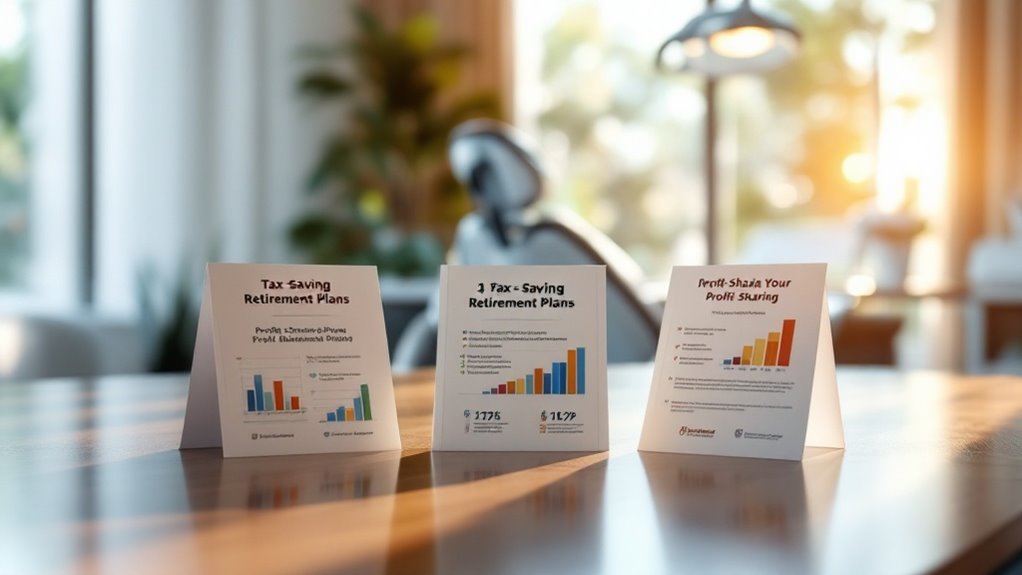As a dental clinic owner, you might be overlooking valuable opportunities to enhance your retirement savings while minimizing your tax burden. Three tax-saving retirement plans—Solo 401(k), SEP IRA, and profit-sharing plans—offer unique advantages tailored to your practice's needs. Each option can greatly influence your financial future and help create a more attractive workplace for your staff. Understanding the nuances of these plans could lead to better financial security, but the right choice depends on several factors that you'll need to take into account carefully. So, what should you prioritize when evaluating these plans?
Key Takeaways
- Solo 401(k) allows dentists to contribute up to $66,000, reducing taxable income with potential for additional catch-up contributions.
- SEP IRA enables contributions of 25% of employee compensation or up to $66,000, with minimal paperwork and tax deductions.
- Profit-sharing plans offer flexible profit allocation, providing tax deductions and enhancing employee engagement through shared success.
- Defined benefit plans guarantee retirement income based on salary and service years, appealing to long-term employees and attracting talent.
- Health Savings Accounts (HSAs) offer a triple tax advantage for medical expenses, supporting both healthcare savings and retirement planning.
Overview of Tax-Saving Retirement Plans

When you're managing a dental clinic, exploring tax-saving retirement plans can greatly impact your financial strategy.
You've got several retirement plan options to take into account. For instance, the Solo 401(k) allows you to contribute up to $66,000 in 2023, considerably lowering your taxable income.
A Simplified Employee Pension (SEP) IRA lets you contribute up to 25% of employee compensation or a maximum of $66,000, providing tax-deferred growth.
Profit-sharing plans offer flexibility, letting you allocate profits towards employee contributions while enjoying tax deductions.
Additionally, defined benefit plans guarantee assured income based on salary and service years, allowing for larger contributions.
These options not only provide tax benefits but also improve your clinic's appeal to potential employees, nurturing loyalty and stability.
Benefits of Retirement Planning for Clinics
Retirement planning offers significant advantages for dental clinics, especially in a competitive job market. By implementing effective retirement plans, you can attract and retain skilled employees, enhancing their loyalty and satisfaction.
With 78% of small businesses lacking these plans, offering solid employee benefits sets your clinic apart. Proactive retirement planning also helps mitigate rising living and healthcare costs, granting your team financial security and control over their futures.
Furthermore, these strategies boost employee morale and engagement, nurturing a culture of shared success through profit-sharing options.
Ultimately, all-encompassing retirement solutions not only improve financial well-being for your staff but also enable you to plan effectively for your own retirement timing, location, and lifestyle choices.
Solo 401(k) Plans for Dentists

If you're a sole proprietor dentist looking to secure your financial future, a Solo 401(k) plan can be a game-changer. This retirement plan lets you contribute up to $23,000 in 2024, plus an extra $7,500 if you're 50 or older.
As both employee and employer, you can maximize your contributions, potentially reaching a total of $69,000. A Solo 401(k) also offers the option for tax-deferred growth, letting your investments grow without immediate tax consequences.
You can choose between pre-tax or Roth contributions, giving you flexibility in planning for retirement. Plus, with various investment options and the ability to take loans against your account, this plan is especially beneficial for high-earning dentists looking to lower taxable income.
Simplified Employee Pension (SEP) IRA
A Simplified Employee Pension (SEP) IRA offers a straightforward and effective way for dental clinics to enhance their retirement savings while enjoying considerable tax benefits.
With SEP IRAs, you can make tax-deductible contributions up to 25% of an employee's compensation or a maximum of $69,000 for 2024.
They're easy to administer—minimal paperwork and no annual filing requirements make them ideal for small practices.
Plus, all eligible employees, including part-time workers with three years of service, receive the same percentage of contributions, promoting fairness.
Contributions are made on a pre-tax basis, greatly reducing taxable income for both you and your employees.
Unlike other plans, you decide each year how much to contribute, giving you flexibility based on your practice's profits.
Profit-Sharing Plans for Dental Practices

When you implement a profit-sharing plan in your dental practice, you not only create a culture of ownership among your staff but also enjoy significant financial flexibility.
This plan allows you to share a portion of your profits with employees, encouraging loyalty and commitment. Contributions can vary each year, aligning with your practice's profitability, making it easier to adjust as needed.
For 2024, you can contribute up to 100% of an employee's compensation or $69,000, whichever is lower. These tax-deductible contributions reduce your taxable income while boosting your employees' retirement savings vehicle.
Plus, offering a profit-sharing plan can enhance your recruitment and retention efforts, giving you a competitive edge in attracting top talent to your practice.
Health Savings Accounts (HSAs)
Health Savings Accounts (HSAs) provide a robust tool for dental practitioners looking to save on taxes while ensuring their employees can cover future medical expenses.
HSAs allow you to contribute pre-tax dollars for qualified medical expenses, with contribution limits set at $3,850 for individuals and $7,750 for families in 2023.
One of the best features is the triple tax advantage: your contributions are tax-deductible, any investment growth is tax-free, and withdrawals for qualified medical expenses are also tax-free.
Funds in HSAs roll over annually, promoting long-term savings for healthcare costs during retirement, which can average around $572,960 for a healthy couple.
Plus, employers can contribute, enhancing the overall tax-saving potential for your practice.
Choosing the Right Plan

How do you navigate the myriad of retirement plans available to your dental clinic? Start by evaluating your goals and the needs of your team.
Consider various retirement plans like 401(k)s or Simple IRAs, each offering unique benefits and contribution limits. A well-structured financial plan guarantees you maximize contributions to this account while minimizing tax burdens.
Think about your clinic's cash flow and how much you can realistically contribute each year. Don't forget to assess your staff's preferences, as enhancing their retirement benefits can improve job satisfaction.
Take your time, weigh the options, and choose a plan that aligns with your long-term vision. Remember, the right retirement plan is essential for your clinic's financial health and your team's future security.
Professional Guidance and Compliance
Steering through the complexities of retirement plans can be overwhelming, but seeking professional guidance is essential for ensuring compliance with regulations like ERISA.
By engaging financial advisors, you can optimize your retirement savings strategies while adhering to tax regulations and maximizing tax benefits. Regular consultations with tax professionals keep you informed about changes in tax laws affecting your retirement plan contributions and withdrawals.
Professional guidance also aids in preparing and filing necessary documentation, like Form 5500 for 401(k) plans, ensuring you meet annual reporting requirements.
Understanding these compliance requirements helps you avoid significant penalties that could impact your retirement savings and overall financial health.
Don't take chances; investing in professional help pays off in the long run.
Frequently Asked Questions
What Are the Three Retirement Plans?
When considering retirement plan comparisons, you'll find options like Solo 401(k)s, SEP IRAs, and SIMPLE IRAs. A tax benefits analysis helps you choose the best dental clinic strategies for maximizing savings and ensuring financial security.
What Is the Retirement Plan for a Dentist?
As a dentist, maximize your retirement benefits through strategic financial planning. Consider succession planning for your dental practice, ensuring a secure future while leveraging tax-efficient retirement plans tailored to your unique needs and goals.
What Three Retirement Savings Plans Have Contributions Made That Are Tax Deductible?
As they say, "A penny saved is a penny earned." You'll find tax deduction benefits in 401(k)s, SEP IRAs, and SIMPLE IRAs, each with their own contribution limits, making retirement plan comparisons essential for maximizing savings.
How to Save for Retirement as a Dentist?
To save for retirement as a dentist, focus on retirement savings strategies that suit your goals. Incorporate financial planning essentials and consider dental practice succession to guarantee a secure financial future for you and your family.
Conclusion
Incorporating tax-saving retirement plans like Solo 401(k)s, SEP IRAs, and profit-sharing plans can be a game-changer for your dental clinic. These strategies not only secure your financial future but also cultivate a thriving environment for your team. Think of it as planting seeds for a prosperous tomorrow; with the right care, they'll grow into a strong, supportive practice. So, take charge today—invest in your future and watch your clinic flourish, both financially and in talent retention.


